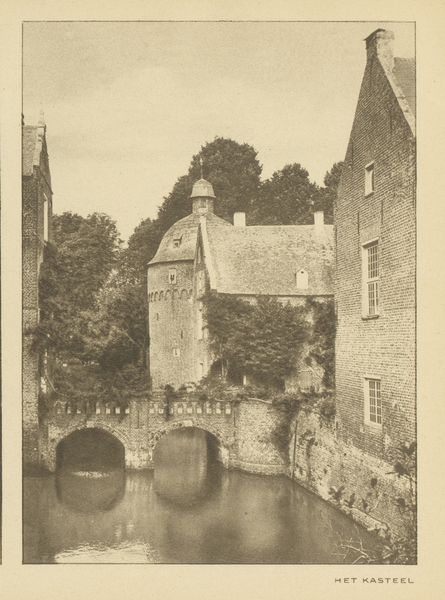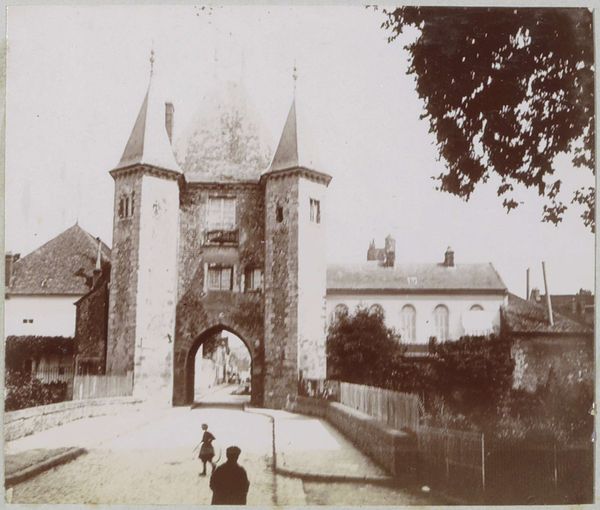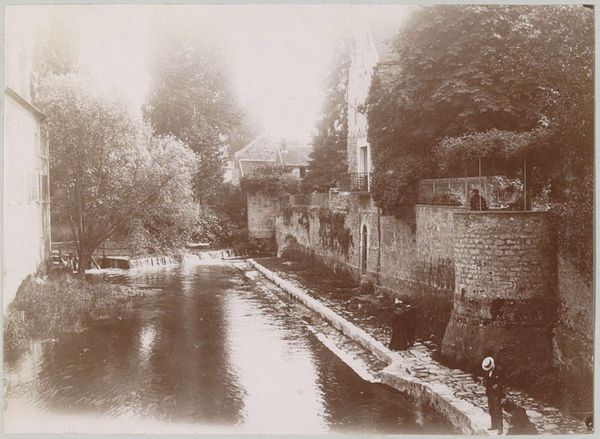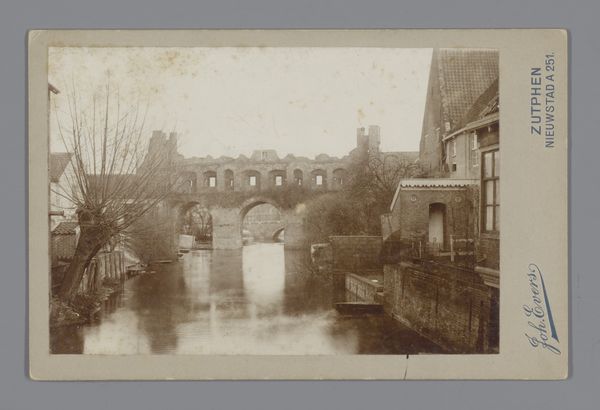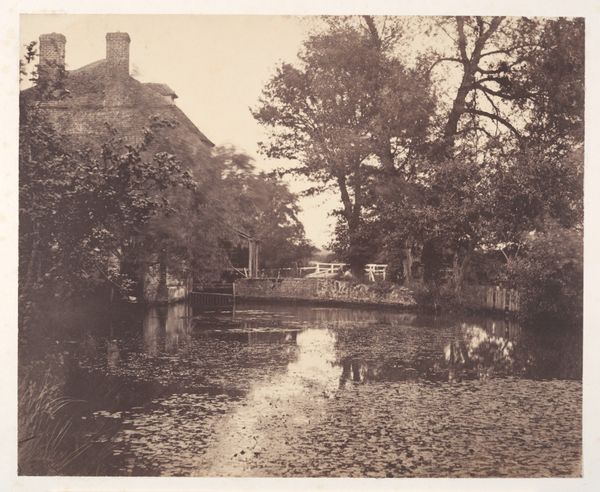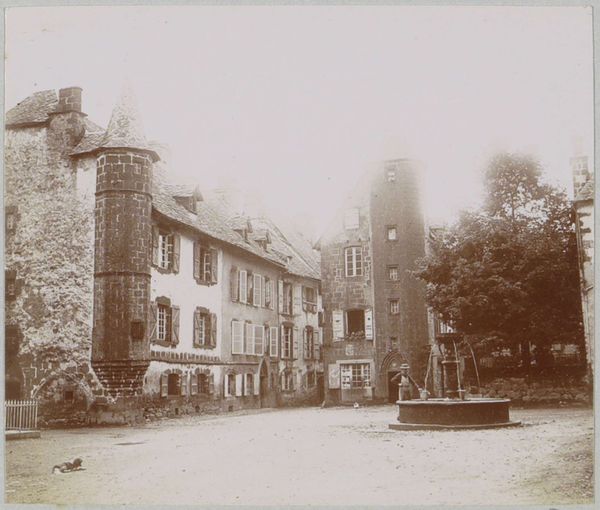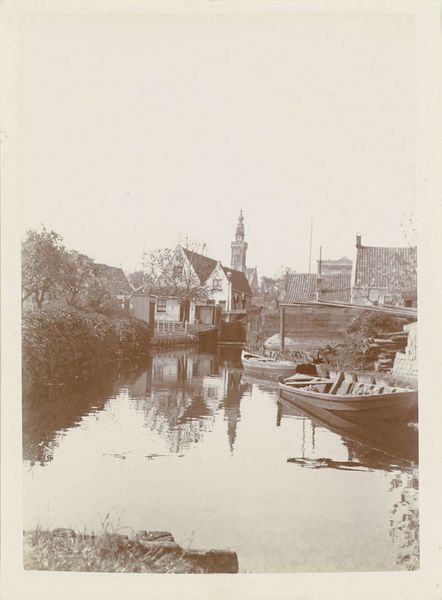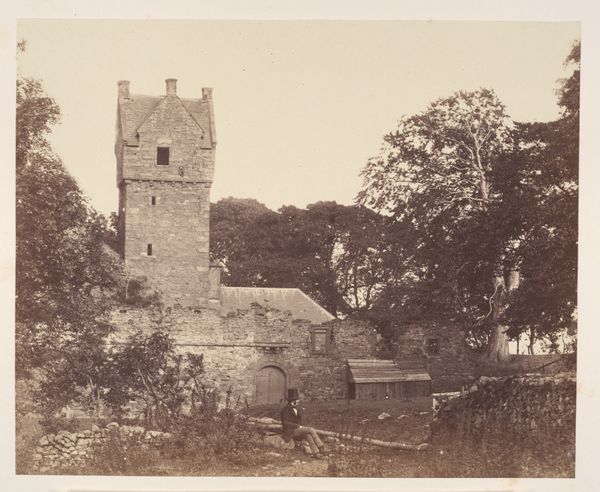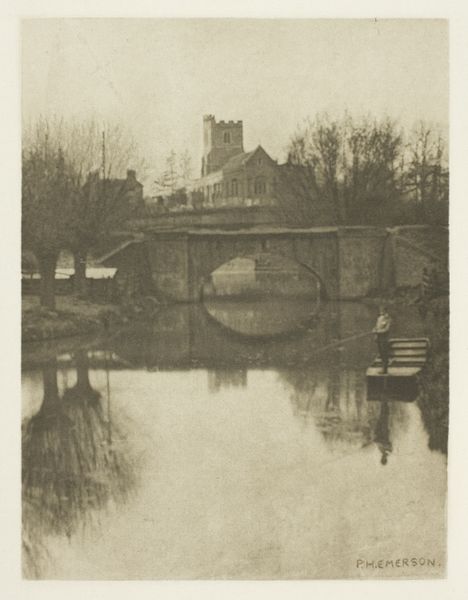
Gezicht op de Henkerstegbrug tussen de watertoren (rechts) en de Henkertoren (links) in Neurenberg 1900
0:00
0:00
delizy
Rijksmuseum
print, photography, gelatin-silver-print
# print
#
landscape
#
german-expressionism
#
photography
#
gelatin-silver-print
#
cityscape
Dimensions: height 78 mm, width 108 mm
Copyright: Rijks Museum: Open Domain
Curator: Let's take a moment to look at this gelatin silver print from around 1900. It's entitled "Gezicht op de Henkerstegbrug tussen de watertoren (rechts) en de Henkertoren (links) in Neurenberg," housed here at the Rijksmuseum. Editor: Immediately, the muted tones strike me. It evokes a sense of stillness, almost as if time is holding its breath. The composition, dominated by architectural elements, feels very deliberate, but also somber. Curator: It certainly is. What's interesting about images like this one is understanding their place within the development of urban photography, particularly in documenting historical architecture. Think about the context: turn of the century Europe grappling with rapid industrialization alongside a desire to preserve the past. Editor: Right. And the location itself is steeped in history. Nuremberg, even before the devastating world wars, carried the weight of the Holy Roman Empire and the complex relationship between progress and the stories we tell ourselves. The photographer's decision to frame the Henkersteg bridge, once a covered executioner's bridge, and the towers speaks volumes. It forces us to confront a history of judgement, marginalization and justice in visualizing space. Curator: Absolutely. There's a fascinating interplay between the personal and the public unfolding. Photography, while aiming for objectivity, invariably carries the biases and perspectives of the photographer and broader societal forces. Editor: I can’t help but read a commentary on societal memory. We build bridges, both literally and metaphorically, connecting different aspects of our existence, our progress and pasts that often get obfuscated within narratives of redemption. Curator: Precisely! These gelatin silver prints from around 1900 were tools for creating a sense of collective identity through shared historical narratives, although these narratives were selective and often fraught with issues of power. The German Expressionist undertones add another layer in that this feels simultaneously modern, and ancient, burdened. Editor: Thinking about the symbolism inherent within the space, how those buildings may represent cultural anchors in a world that was hurtling headlong towards change… It really highlights how photography in the early 20th century did more than simply document reality; it constructed it. Curator: It really invites us to delve into the visual encoding of civic values and collective memories through the urban landscape. Thank you for enriching my understanding of the context that made it what it is.
Comments
No comments
Be the first to comment and join the conversation on the ultimate creative platform.
